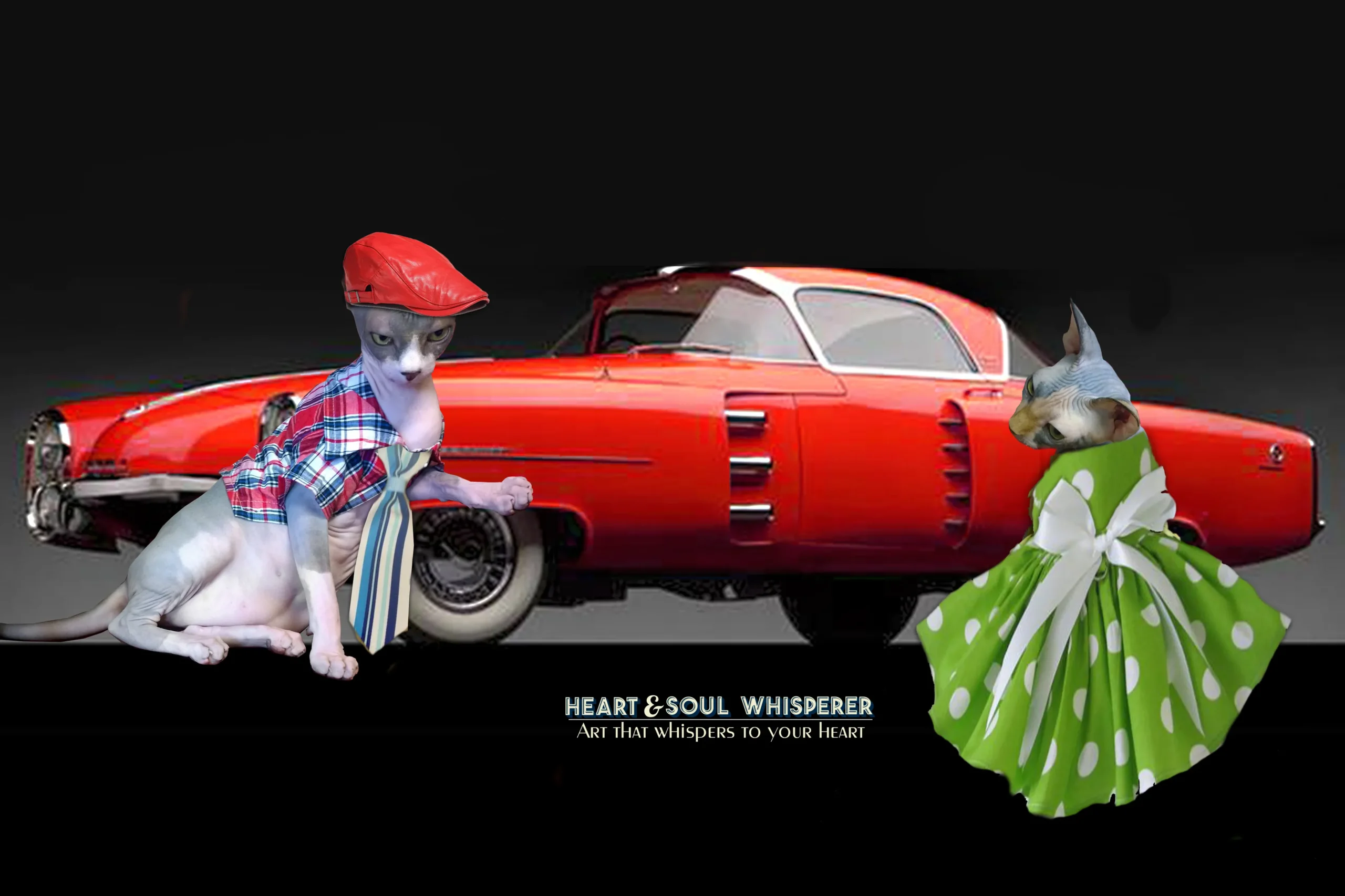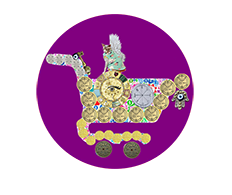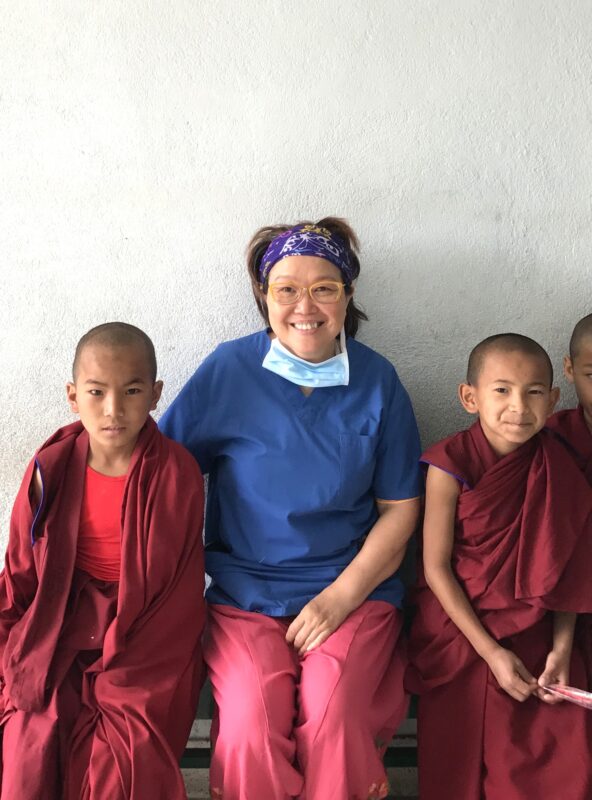See Dating scene of Ancient community in Taquile Island Peru, Taquile floating island of traditional weavers, Taquile Island: Timeless Traditions on Lake Titicaca, A Glimpse into Local Life on the island of Taquile – Highest Navigable Lake in the World
Dating scene of Ancient community in Taquile Island Peru
Welcome to Travel, Lifestyle, Art & Photography of Dr Zenaidy Castro Blog. The globetrotting Cosmetic Dentist based in Melbourne Australia. See the world from my photographic perspective. I identify myself as a passionate explorer and adventurer at heart, with strong interest in remote places, unique cultures and different lifestyle.
I hope you enjoy exploring my travel blog and inspired by what you see. Through my photos, I hope to encourage others to get out and explore. To not be scared and to be open to new experiences and civilisations. Because, at the end of the day, travel is about finding experiences that change our minds and widen our perspectives in order to create a more inclusive world. Please feel free to browse thru my blog.
Most of the photographs posted on this blog were taken with my mobile phone. I invite you to browse through my SHOP page to see the real fine art photography that I have created while travelling.
______________________________________________________________________________________________
The Dating and Courtship Traditions of Taquile Island, Peru: An Intimate Window into Ancient Andean Love
Nestled on the serene waters of Lake Titicaca, Taquile Island is a unique Andean community where the rhythms of daily life continue to be shaped by centuries of tradition. Central to these traditions are the customs surrounding courtship and marriage, which offer a fascinating glimpse into how love, social cohesion, and cultural identity intertwine in Taquile society.
In many ways, Taquile’s approach to relationships and matrimonial union reflects the communal values and symbolic richness that define the island’s cultural landscape. Unlike Western modern “dating,” courtship in Taquile evolves through collective participation, memorably marked by textile artistry, social roles, and profound respect for communal approval.
Traditional Courtship: Love Woven Through Work and Symbolism
Unlike urban societies where dating often involves private encounters or formal outings, the process of courtship on Taquile Island unfolds organically through daily communal interaction within the village’s close-knit social fabric. Young men and women meet, interact, and nurture relationships in the context of collective labor, rituals, and celebrations.
At the heart of courtship is the artistry of knitting and weaving. Textile production is not merely an economic activity but a deeply symbolic one, with patterns and techniques passed down through generations. It is within this craft that courtship marks its most distinctive expression.
The Textile Language of Love
Knitting the chullo (traditional wool hat) for women and men on Taquile is a profound cultural practice laden with messages of status, identity, and intention. Men knit chullos, while women weave waistbands (chumpis) and skirts.
For a man seeking to win the favor of a woman’s family, particularly her father, the creation of an extraordinary chullo is essential. The chullo must not only be beautiful but also demonstrate technical excellence. A man’s skill is assessed by the tightness and quality of his knitting, which is related to a traditional test—carrying water in the inverted hat without leakage. An imperfect chullo indicates insufficient capability and commitment, and the man may have to try repeatedly until his craft meets the mark.
This act goes beyond mere craftsmanship; it is a symbolic demonstration of the man’s patience, diligence, and respect—qualities highly valued for lifelong partnership. Presenting the chullo to the prospective father-in-law is a formal gesture seeking family approval, signaling the seriousness of the courtship.
Living Together Before Betrothal
Once the family accepts the prospective son-in-law, the couple is often permitted to live together temporarily. This cohabitation allows them to assess their compatibility within the framework of communal norms. It provides space for emotional bonding, shared responsibility, and mutual understanding, all closely observed by family and community members. This phase contrasts with Western “dating” by emphasizing community awareness and support, rather than individual privacy.
During this time, the young man begins to knit a special chullo for himself in preparation for the wedding day, further cementing the relationship with symbolic artistry.
Visual Signals of Relationship Status
Taquile’s rich sartorial codes extend to public signaling of relationship and social status. The color and style of hats communicate complex messages: red hats are worn by single men, while men who are married change their chullo to incorporate red and white patterns. The village mayor or leader dons a distinctive black felt cap.
Women also use headwear as social indicators. Unmarried women who are seeking a husband wear large, colorful pom-poms on their black headscarves, while married women wear smaller pom-poms. These signals help community members navigate social relations and courtship opportunities in public spaces.
In this way, Taquile’s clothing acts as a mobile social document—telling a story about the wearer’s life stage, relationships, and role within the community.
The Communal Nature of Romance
Courtship on Taquile is never a private affair but unfolds within a social milieu where family and community play active roles. Elders carefully observe interactions, encouraging suitable matches and guiding expectations based on social harmony and continuity.
The community’s collectivist worldview ensures that relationships are aligned not just for personal happiness but for the reinforcement of family alliances and social stability. Marriage is seen as a foundational institution that binds clans and families, preserving tradition and land inheritance.
Romantic expressions—while modest and respectful—are integrated into communal activities, such as textile-making circles, farming projects, and collective fiestas. These interactions create a natural environment for personal relationships to blossom without disrupting social order.
The Wedding Ceremony Tradition of Taquile Island: An Eight-Day Endurance of Love, Spirit, and Community
While courtship in Taquile is gentle and woven into daily life, the wedding ceremony is a spectacular, taxing, and deeply ritualized event lasting eight days. It reflects the community’s reverence for marriage as a sacred, socially significant union, requiring endurance, humility, and the blessing of ancestors and Pachamama (Mother Earth).
Unlike festive weddings in many cultures that center on celebration and joy, Taquile’s wedding rituals impose severe trials and a solemn spiritual dimension on the bride and groom.
Preparation for a Wedding
Before the wedding begins, the couple and their families prepare for a series of customs steeped in collective effort and symbolic meaning.
- Sewing and knitting of special garments open the ceremony, with the brothers or male friends often responsible for crafting chullos and chumpis that reflect the couple’s new status.
- Animal sacrifices, especially of sheep, are arranged by the parents as offerings to the community’s spiritual world and as a means of honoring the future union.
The social hierarchy and family ties are reinforced by the roles each member plays in these preparations, emphasizing that marriage is more than a union of two—it is the joining of communal bonds for continuity.
The Eight-Day Wedding Ceremony: Tradition and Trial
For eight days, the bride and groom are the center of attention, but paradoxically, they undergo a grueling test of endurance and quietude.
3 of these days involve the couple kneeling in meditation on the rough, flea-infested skin of a sacrificial sheep. This is meant to be a lesson in humility, patience, and spiritual strength. The grass and dirt may seem softer, but the sheep skin is intentionally left uncleansed, allowing ticks and bites to attack the couple. They must remain perfectly still, avoiding any movement that could disrupt this solemn display of dedication.
The sacrifice of the sheep by the parents is also a communal act—demonstrating the family’s willingness to give up valuable resources for the benefit of the next generation and the community as a whole. The act binds the couple into a cosmic web of reciprocity between humans, animals, and spirits.
During these days, while the couple kneels in imposed pain and meditation, the rest of the village celebrates. The sharp contrast between the couple’s ordeal and the surrounding festivities highlights how marriage is perceived as both a personal sacrifice and a communal milestone.
Symbolism of Garments and Hats at the Wedding
At the conclusion of the kneeling rite and throughout the ceremony, clothing becomes a particularly potent symbol:
- The groom wears the finely knitted chullo that he created during courtship, now a badge of honor and symbolic craftsmanship.
- During the ceremony and thereafter, the groom’s hat changes to one with red and white colors, signifying his married status.
- The bride wears colorful polleras (skirts) and chumpis that have been woven with traditional motifs reflecting community stories and values.
The couple’s new attire signals their transition to marital status and social maturity to everyone on the island.
Communal Feasts and Celebration
Following the strenuous meditation ritual, the community unites to celebrate with music, dancing, and feasting. The celebration lasts through the remaining days of the wedding ceremony. Family and neighbors share food and drink, often consuming dishes made from the sacrificed sheep and local crops.
Villagers wear their finest traditional garments to honor the union. Women’s enormous pom-poms and men’s formal hats add vibrant colors to the festivities, visually animating the village and reinforcing the sense of unity.
Marriage as a Covenant with the Cosmos
For the Taquileños, marriage is not solely a solemn human contract but a covenant with nature and the spiritual world. The endurance featured in the wedding ceremony represents the couple’s readiness to face life’s hardships together, supported by the blessings of Pachamama and the ancestral spirits.
The marriage ceremony transmits responsibilities: to family, to the community, and to the natural world. It ensures that the couple is integrated fully into the social fabric—prepared to nurture land, children, and culture.
The Social and Cultural Significance of Taquile’s Courtship and Wedding Traditions
Taquile’s courtship and wedding traditions are deeply embedded in the island’s collective philosophy. Marriage represents the foundation of community cohesion, intergenerational continuity, and cultural survival.
Collective Responsibility and Social Integration
Every stage of romance and marriage involves community participation, ensuring that personal relationships serve broader social purposes. The ritual tests (such as the knitting challenge and the kneeling meditation) highlight virtues esteemed by the community—patience, skill, endurance, humility.
By involving the whole village in these rites, the traditions reinforce a collective identity and ensure that unions are supported and respected.
Endurance as a Path to Social Maturity
The painful wedding rituals insist on a trial of endurance, symbolically aligning the couple with the hardships of agricultural life and communal responsibility. Love and marriage are thus understood as life journeys demanding strength and cooperation.
Textile Traditions as Expressions of Identity and Affection
Textile production is not merely craft but a language that marks emotional milestones. By knitting and weaving for a partner, the individuals communicate commitment, respect, and cultural belonging. Clothing acts as a durable signifier of social roles and states of being.
Continuity in a Modernizing World
Despite external changes brought by tourism and globalization, the core courtship and wedding traditions endure on Taquile. They offer a vital connection to ancestral heritage, providing young people with a sense of identity and purpose grounded in shared values.
The ancient community of Taquile Island offers a deeply resonant model of courtship and marriage rooted in communal labor, symbolic craftsmanship, and spiritual endurance. The dating scene is not a private, individual act but a process woven through work, family involvement, and social signals rendered in exquisite textile art.
The wedding ceremony is an extended, multi-day ritual juxtaposing celebration with trial, weaving together physical endurance and spiritual symbolism to mark a profound life transition. Through these traditions, Taquile preserves its unique culture, sustaining social cohesion and honoring the cycles of life curated over centuries.
Taquile’s romantic traditions remind us that love, partnership, and social belonging are intimately connected—expressed through patience, skill, sacrifice, and the collective spirit of a community embedded in the Andean highlands.
A Glimpse into Local Life and Dating scene of Ancient community in Taquile Island Peru – Highest Navigable Lake in the World
Taquile is an island on the Peruvian side of Lake Titicaca 45 km offshore from the city of Puno. Taquileños are not only known for their fine handwoven textiles and clothing, but also from their traditional dress that communicates relationship status.
Despite the vast technological divide between the ancient Taquile Island community and contemporary societies, at their core, the methods for searching for a life partner share remarkable similarities—both are fundamentally about making oneself visible, attractive, and approachable, albeit through strikingly different means. In modern urban environments, individuals increasingly turn to online dating sites, social media, and sophisticated matchmaking algorithms. These digital platforms offer a curated environment where personal profiles, photographs, and shared interests serve as the initial criteria for connection. People spend hours selecting their best pictures, writing engaging bios, and navigating messaging apps, all with the aim of finding someone compatible for companionship or love.
Meanwhile, on the remote shores of Taquile Island in Lake Titicaca, the search for a life partner is woven into the very fabric of daily life, expressed through a language of color, texture, and tradition. Here, the act of “creating an online profile” is replaced by the way people dress and present themselves in public spaces. The community’s customs elevate clothing, particularly knitted hats (chullos) for men and adorned headscarves for women, as dynamic signaling systems for relationship status. Men painstakingly knit their chullos, imbuing them with patterns that reflect their family heritage, skill, and personal stories. The colors and designs of these hats serve as an open declaration: red and white might indicate a single man seeking a partner, while all red signifies marriage. The style of the chullo evolves with life’s milestones, making one’s journey through courtship and commitment visible to all
Women, in turn, use the size and prominence of the pom-poms on their headscarves to communicate availability and status. Married women wear smaller pom-poms, while those seeking a relationship sport a single, large, and colorful pom-pom—impossible to miss against the backdrop of traditional black fabric. These visual markers eliminate the need for direct conversation about relationship status, making the process of identifying potential partners both efficient and culturally meaningful
Dating customs in Taquile are thus deeply embedded in communal life and grounded in textile craftsmanship. The process is not limited to passive signaling; it involves active collaboration, as men must prove themselves worthy by demonstrating their weaving skills to a prospective partner’s family. Far from the anonymous swipes of online dating, courtship here is a social and tactile process, with families playing a central role in approving or guiding the union
In both settings—the digital and the traditional—the intention is the same: to attract a suitable partner and build a lasting relationship. Our reliance on screens and algorithms merely updates the tools used, not the underlying desire for connection. The Taquileños’ dependence on handmade garments as relationship signals highlights a profound respect for craftsmanship, heritage, and community. Theirs is a language of love rooted in centuries of tradition, where every stitch, color, and fiber tells a story.
As globalized technologies continue to reshape how people meet and form relationships, the practices of Taquile Island stand as a reminder of the ingenuity and artistry inherent in even the most ancient forms of courtship. Whether swiping on a profile photo or knitting a labor-intensive chullo, humans will always find creative ways to seek companionship. The core difference lies not in our goals, but in our devices: while we navigate the complexities of digital romance, the Taquileños rely upon the enduring power of cloth, color, and community rituals. Ultimately, both systems reveal the universal instinct to connect with others, to be seen, and to find meaning in partnership. In Taquile, as in the digital age, the search for love is both an art and a science, shaped by the tools and traditions available to each generation.

On Taquile Island, clothing and accessories serve as a powerful, nonverbal language for expressing social status and intentions, especially when it comes to finding a life partner. Among the various garments and adornments, hats play a central role in communicating relationship status for men, while women use the color of their upper garments and the size of their pom-poms to signal their marital condition and availability.
For the women of Taquile, the color they wear on their upper body tells a clear story. If a woman aged 17 or older wears red, it signifies that she is married. This vivid color immediately informs the community of her status and signals that she is committed. In contrast, if she wears any other color, it indicates that she is unmarried and therefore available for courtship. This simple visual cue allows the entire village to understand each woman’s position without the need for direct conversation about private matters. This quiet communication through dress facilitates the natural dynamics of relationship building within the cultural context of Taquile’s close-knit society.
The women’s use of pom-poms further enriches this signaling system. During festivals and communal gatherings, women wear headscarves that cover much of their faces, leaving only one eye visible. This traditional attire might seem to mask individual identities, but the size and prominence of the brightly colored pom-poms attached to their scarves are the key indicators of social status and availability. Single women seeking a husband wear a single large, colorful pom-pom, a bold visual appeal designed to attract attention and indicate readiness for partnership. Married women, on the other hand, wear smaller pom-poms, signaling their committed status with subtlety and distinction.
This system of visual communication through clothing and adornments mirrors the social values of the island, where community harmony, respect for tradition, and clarity of social roles are paramount. It removes ambiguity from social interactions, making the process of finding a partner a shared understanding among community members rather than a private or secretive affair.
The tradition extends to men as well, though executed through their distinctive, hand-knitted hats called chullos. Single men typically wear red chullos, showcasing their bachelor status. Married men display chullos featuring a combination of red and white, clearly indicating their marital state. The village leaders don black felt hats, visually distinguishing their authority. Men’s hats, like women’s dress, carry symbolic meanings deeply intertwined with personal identity and social standing, serving as a public announcement of one’s place within the social and romantic landscape.
These customs demonstrate how the Taquileños have ingeniously embedded vital social information into everyday clothing, making style and color a form of social currency integral to building relationships. The reliance on these visual signals simplifies courtship in a community where face-to-face interaction is constant and highly communal. Instead of secretive or private courtship methods common in many urban areas, Taquile’s approach fosters openness and transparency through the very clothes its people wear.
In essence, on Taquile Island, finding a future spouse is intimately connected to how one presents oneself visually within the community. The earnest effort men invest in knitting their hats and the careful choice of colors and adornments by women become the social equivalents of modern dating profiles and messages. This method has endured for generations, preserving not only the island’s distinct cultural identity but also its social coherence, blending romance, tradition, and community into a harmonious way of life.

The women know which men are on the market through the colour and form of their hat- it identifies his relationship status. The general rules are: a red and white hat means he is single, red and blue means he is engaged and all red means he is married.
The moment when the pom-pom on his hat is increasing, it’s getting bigger, it tells everybody he’s looking for love.

Variations are available to single men as well. They may change the direction of the hat’s tassel to indicate if they are looking for a relationship or not, just like your ‘relationship status’ on Facebook, or the ‘looking for…’ section on dating websites. It seems to me that these techniques of finding the ‘perfect match’ are, in essence, just more extensive versions of the hat system. Who’d have thought that our society’s eagerness for revealing the state of our love life to the world could be traced back to a time before the internet dating scene?
If is also customary for young teenager to have a trial marriage, like a live-in arrangement for few years, until they are ready to commit.


When a young couple decides to take the important step toward marriage on Taquile Island, the process is deeply rooted in tradition, craftsmanship, and communal approval. Central to this journey is the young man’s demonstration of his skill and dedication by knitting a traditional cap, known as a chullo, which serves not only as a practical garment but also as a symbol of his readiness to provide and care for a family. The act of knitting this cap is a vital rite of passage — it is the young man’s way to impress his prospective bride’s parents and to show that he possesses the patience, skill, and commitment needed to support a household.
Knitting a chullo is no casual task; it requires significant time, skill, and fine craftsmanship. The cap is knit with such care that it is meant to withstand the most exacting test: the father-in-law of the woman will fill the inverted hat with water. If the threads are too loose and allow water to leak through, the young man fails the test, and the symbolic implication is clear. He must refine his work, start over, and demonstrate a higher level of mastery to prove that he is capable of tending to the needs of his future family. A chullo that can hold water without dripping embodies the young man’s ability to be dependable, patient, and careful—all qualities essential for family life.
This practical demonstration is more than just a test of knitting; it is a measure of character and perseverance. Passing this challenge earns the man the blessing and approval of his partner’s family, an essential step before he can officially be accepted as a suitor. In turn, this approval strengthens the social fabric of the community by ensuring that marriages are formed with mutual respect and genuine commitment.
On the other side, Taquile women also engage in a significant ritual of their own before the wedding ceremony. They weave a belt, called a chumpi, which serves as a matrimonial contract embroidered with symbolic images representing the material and social expectations they hold for married life. This belt is not merely decorative; it is laden with meaning. The woven pictures depict essential elements that the woman looks forward to having in her married life: crops for summer and winter, a strong roof over their house, a cow to provide milk, a sharp knife for daily tasks, a sturdy bucket for carrying water, and plentiful firewood.
This wearable contract confirms the woman’s hopes and requirements for a partnership grounded in survival, domestic harmony, and shared responsibility. By creating such a belt, the bride sets the terms of her future life and communicates them both to her husband and the wider community. It reflects an understanding that marriage is not simply a romantic union but a practical collaboration essential for continuing their way of life on the island.
These intertwined traditions—of the man knitting the chullo and the woman weaving the chumpi—highlight the dignity, artistry, and mutual responsibilities valued by Taquile’s people. They emphasize that marriage is a union built on skills, dedication, and community endorsement rather than fleeting affections. In this way, personal love is inextricably linked to social cohesion, cultural heritage, and the pragmatic demands of island life.
Together, these customs preserve Taquile’s identity and social order, ensuring that every marriage is celebrated as both a personal milestone and a communal event, uniting families through shared craftsmanship and symbolic acts that speak volumes beyond words.
[sp_easyaccordion id=”56016″]

The tradition of weaving and hair on Taquile Island is steeped in significance and symbolism, particularly in the context of courtship and marriage. Taquile women grow their hair long from childhood, and throughout the years, they maintain the practice of keeping every strand they cut. This collection of hair is carefully stored, accumulating over time as the girl grows into womanhood.
When a Taquile woman finds a man she wishes to marry, the hair cuttings she has saved throughout her life take on new meaning. In preparation for the marriage, the woman cuts her hair once more—a symbolic act marking her transition into a new stage of life. Out of all the hair she has saved, she creates a sturdy black thread that acts as a structural framework for knitting a wide belt, known as a chumpi. This belt represents not only her commitment to her future husband but also the continuity of her life and tradition embodied by the collected hair.
To craft the belt, the woman spins her hair together, often combining it with alpaca wool or other fibers to enhance its strength and durability. This process may be inspired by, or parallel to, the tradition where, upon marriage, a woman may cut off her long hair and use it to weave a special belt for her husband, sometimes even as the foundational structure or as a decorative element within the belt. The resulting chumpi is heavily symbolic—worn by the husband, it is believed to protect his health, particularly supporting his lower back and kidneys, and is cherished for the rest of his life.
The act of giving this belt to her future husband is a profound gesture of love and partnership. It stands as a marriage contract visualized in the threads, and a promise of support and care, reinforcing the communal values for which Taquile is known. The belt is also patterned with traditional iconography, sometimes depicting the changing seasons, the tools of daily life, or hopes for married life, making it a wearable story of the couple’s future together
In summary, Taquile women’s relationship with their hair is more than just personal grooming; it is a lifelong act of preparation for a future partnership. The ritual of collecting, spinning, and weaving their hair into a marital belt is a unique tradition that ties together the threads of personal history, communal expectations, and the symbolic transition from single life to marriage. This custom—now in 2025—continues to be a living testament to the island’s deep cultural roots and the enduring bond between craftsmanship, romance, and community.

Once the couple on Taquile Island is officially married, symbolic clothing and woven items play a pivotal role in underscoring their new marital status and responsibilities within the community. The newlywed husband proudly wears the wide belt knit by his wife, an article that stands out because it is uniquely crafted from the very hair she has gathered and saved since childhood. This belt, made strong with both strands of hair and carefully selected fibers, is not just a garment but a public testament to the unity and endurance of the marital bond. At the same time, the husband adorns himself with his elaborately knitted, waterproof cap—striking a distinguished combination of white and red colors—to signal to all that he is now a married man. Together, these items serve as visual reminders both to the community and to the husband of the duties and expectations that come with marriage.
Meanwhile, the wife continues to keep her own woven belt close at hand, a constant symbol and subtle reminder to her husband of his matrimonial responsibilities and the promises made before the community. These belts, adorned with patterns that may depict aspects of daily life and hopes for the future, are woven with as much care as they are worn with pride. They not only reflect individual artistry but also the practical and spiritual commitments expected of married partners.
On the actual wedding day, the entire community comes together in a grand and inclusive celebration. Nearly all of the island’s 1,600 to 2,000 residents attend, making the ceremony one of the largest and most significant social events of the year. The wedding is a truly collective affair—everyone contributes in some way. Families and neighbors bring cattle, food, or other essential items to share, ensuring that there is plenty for everyone and that the festivities are generous and communal. Tables are laden with traditional dishes, and the sense of unity is palpable as villagers gather to honor the couple’s new life together. This spirit of sharing and support is fundamental to the island’s culture, reinforcing the bonds between families and generations.
While Taquile Island’s isolation has been essential in preserving its unique cultural practices and identity, it has also introduced challenges for the younger generation. The limited size of the island’s population, combined with strict adherence to traditional marriage customs, means that the pool of potential spouses is constrained. Over time, this has made it increasingly difficult for young men and women to find life partners who bring genetic diversity—fresh supply of DNA—needed to maintain a healthy and expanding community. This situation has led to concerns about the shrinking gene pool and the long-term sustainability of the community’s demographic health. Despite these challenges, the islanders remain deeply committed to their customs, underscoring the resilience and adaptability of their way of life.
Overall, what makes Taquile Island’s culture so fascinating is the seamless integration of practical life, symbolic art, and communal celebration. From the deeply personal act of weaving a marital belt from a lifetime of collected hair, to the grand and inclusive wedding festivities, each tradition is imbued with meaning and serves to connect individuals to their families and the wider world. In 2025, as much as in generations past, these rituals continue to shape daily life and social relationships, anchoring the island’s identity in a rapidly changing world. Though challenges persist, the culture of Taquile Island stands as a testament to the enduring power of tradition, community, and the creative spirit inherent in every ritual and celebration.

My photo wearing my pom-pom
Life should not be a journey to the grave with the intention of arriving safely in a pretty and well preserved body, but rather to skid in broadside in a cloud of smoke, thoroughly used up, totally worn out, and loudly proclaiming “Wow! What a Ride!”
– Hunter S. Thompson
Whether you’re seeking modern elegance Abstract art or timeless charm of black and white photography, Dr Zenaidy Castro’s diverse range of art and photographic prints and artpieces ensures you find the perfect match for your unique vision. Explore our abstract art and photographic collection and see how our artworks and photographs can transform your establishment into a visual masterpiece.
[sp_easyaccordion id=”54074″]



═══════════════════════════════════════════════════
At Heart & Soul Whisperer Art Gallery, every coloured and black and white photograph tells a story beyond sight—an emotional journey captured in light, shadow, and soul. Founded by visionary artist Dr Zenaidy Castro, our curated collections—spanning landscapes, waterscapes, abstract art, and more—offer a timeless elegance that transcends fleeting trends. Whether enriching private residences, corporate offices, healthcare facilities, hospitals, or hospitality spaces, our artworks are designed to transform environments into sanctuaries of memory, beauty, and enduring inspiration. Let your walls whisper stories that linger—reflections of art, spirit, and the love that connects us all.
[sp_easyaccordion id=”54056″]
═══════════════════════════════════════════════════
Tag: Travel destination, Travel stories, Travel Blog, Cultural travel, Travel Guide, Adventure Travel, Nature Travel, Street Photography, Wanderlust, Travel Photography, Adventure, World Traveler, Globetrotter, Travel Life, Explore The World















